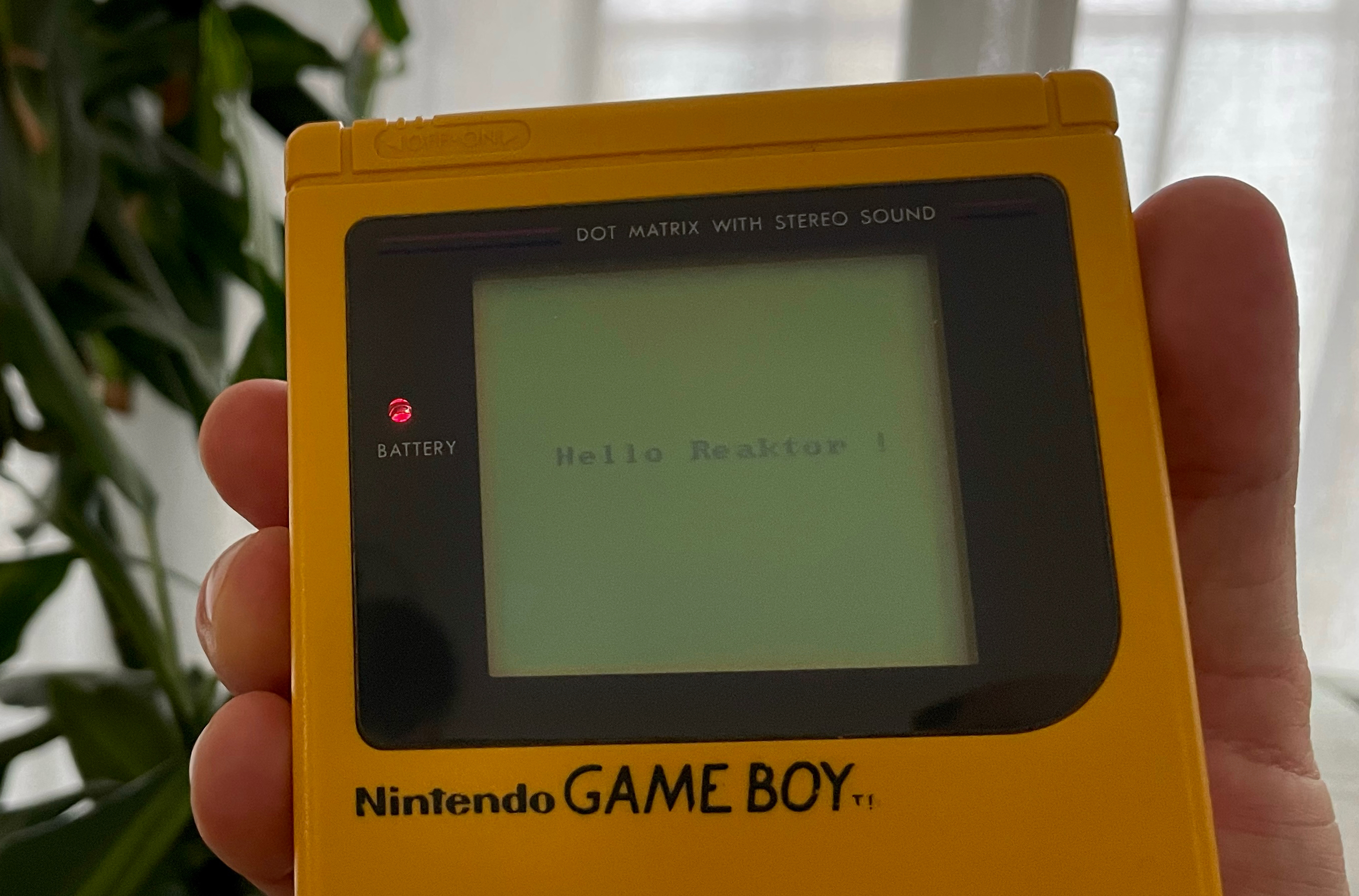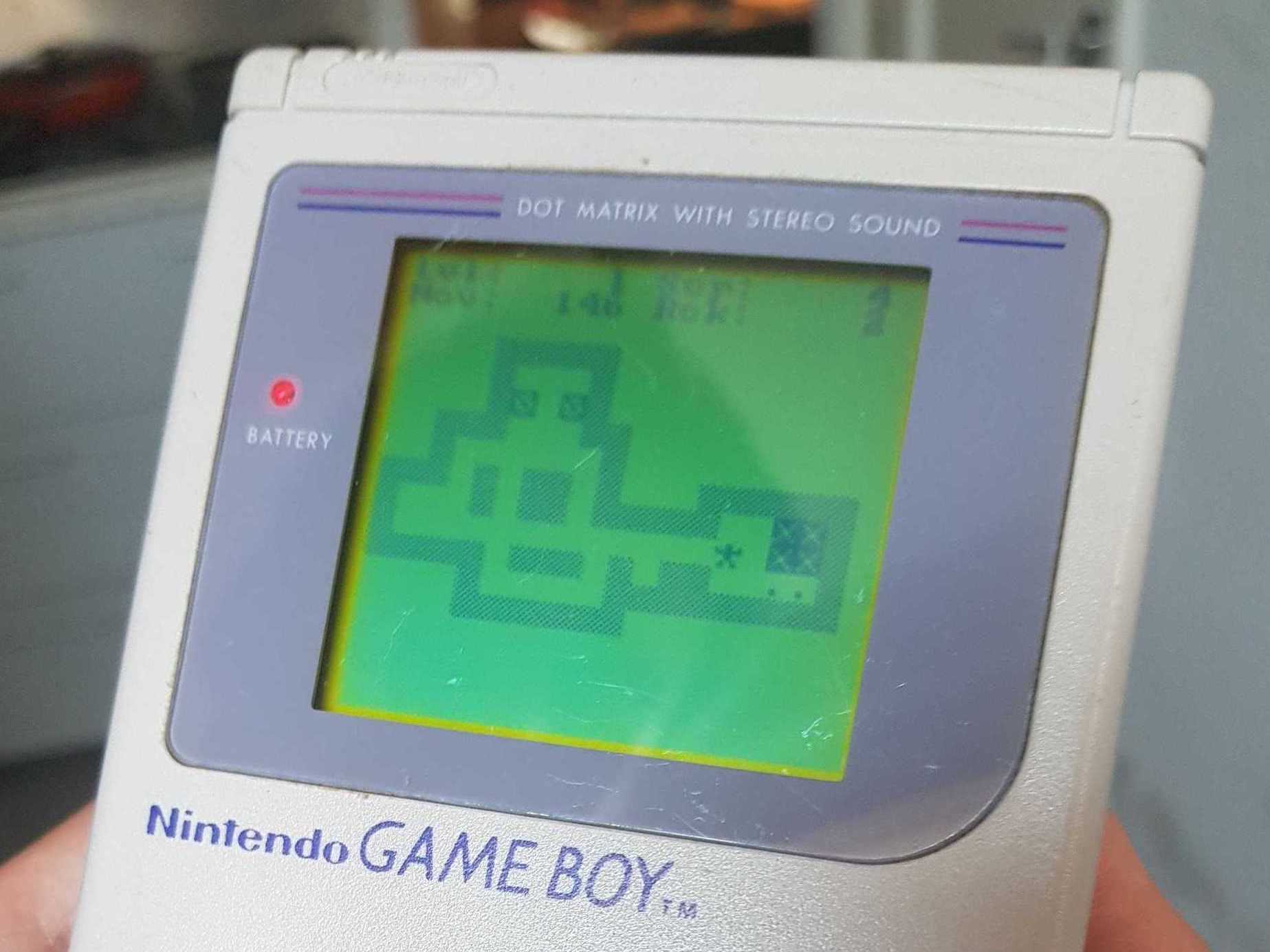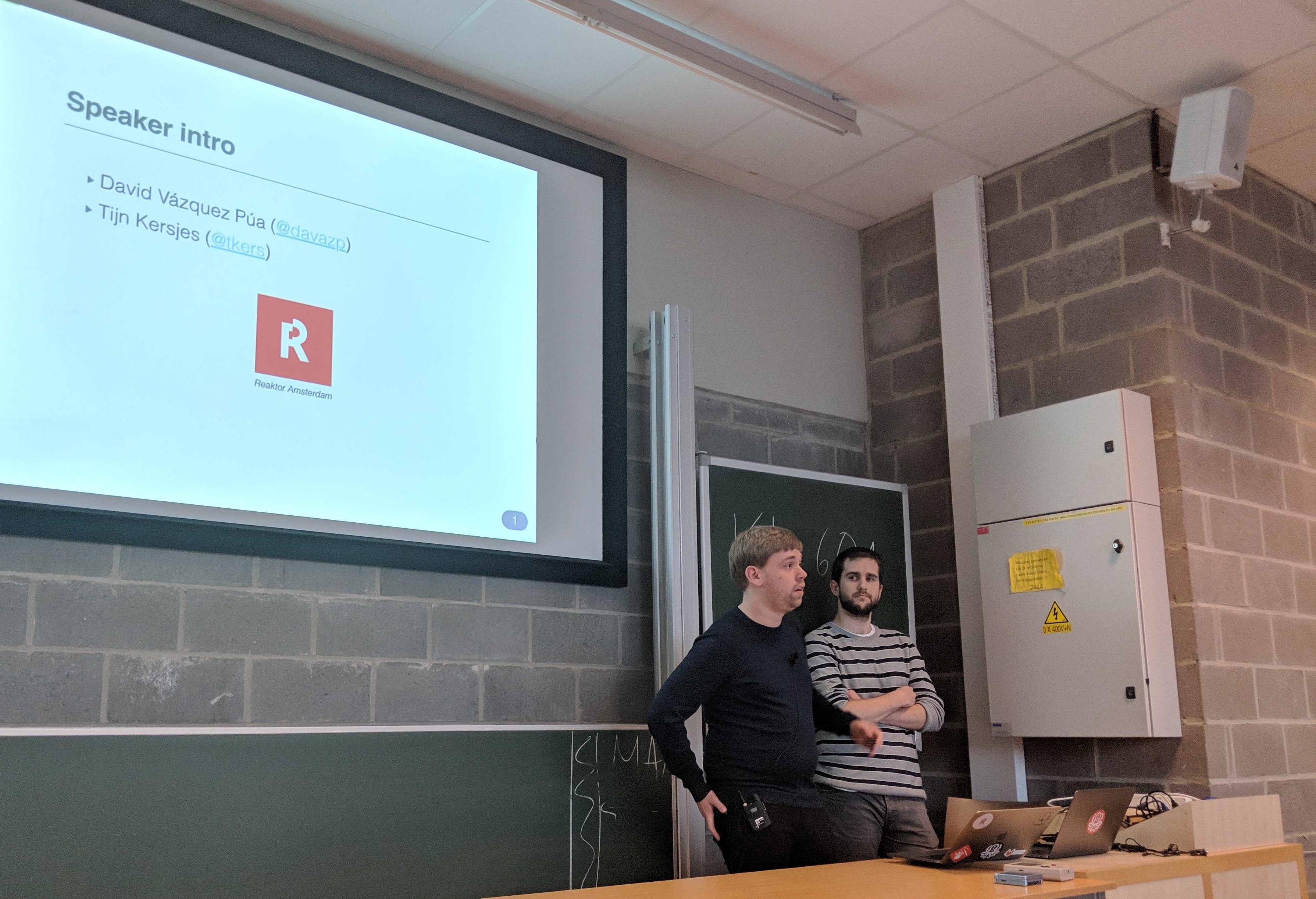Originally appeared on the Reaktor blog
When was the last time you had to worry about how much memory your code could use? Have you ever had to count the clock cycles it takes to render an animation on the screen? If you’re a developer like me, you probably spend most of your time working with a modern, higher-level programming language. JavaScript, Python, Clojure… take your pick: with few exceptions, you extensively rely on the advancements computer science has booked over the last few decades.
Ever felt like things got a little bit too easy?
Well, you’re in luck!
We found an excellent way to break up your daily grind — by diving into the world of retro computers (they are just like real computers, only worse!). So whip out a couple of AA batteries and blow into those dusty cartridges. That’s right, it’s time to write a compiler for the Game Boy!
The Usefulness of “Useless” Projects
Amsterdam Hackers was formed as a Reaktor hobby club for people who enjoy tinkering with software projects without being too worried about the usefulness of those projects. Rather, we try to learn by doing and appreciate the process of discovering knowledge hidden in complex topics. A lot of people underestimate their abilities when they encounter problems they do not know how to solve yet. Amsterdam Hackers encourages people to work on these types of challenges so they can overcome that initial fear of not knowing.
With that in mind, we brainstormed about a suitable first project and kept coming back to the topic of Game Boys. There’s probably a good reason for that: for most of us, these little devices pack a ton of nostalgia — holding one is like being transported back into childhood. And yet, even though we were a bunch of experienced engineers, we knew virtually nothing about how to program them. Needless to say, we were eager to find out! Of course, simply writing a small game would not have been juicy enough, so we decided to develop a programming language for the game console. And then, maybe build a game on top of that while we’re at it? Now we’re talking!
Doing Things the Hard Way
Some 30 years after its initial release, you can find a lot of specs, tools, and tutorials on how to make a Game Boy game from scratch. However, it’s often a bit sluggish, and it takes a long time before you see anything interesting on the screen — until then, you’re stuck with reading pages and pages of documentation. Not a very appealing thought. Plus, the whole point was to discover and learn these things for ourselves. So we figured we could take a more unorthodox approach: start with a working game and reverse-engineer our way back from there. By working bottom-up instead, we would have a short feedback cycle and ensure a functional version of our project between each commit.

After some searching, we found a suitable ROM to kick our project off with: An
example “game” that simply displays “Hello World !” on the screen. Perfect! We
peeked at the contents of the file using hexdump and were greeted with a lot
of (at the time meaningless) numbers:

From there on, we started investigating what all those bytes meant and began deciphering the program 8 bits at a time.
Going Forth
Our tool of choice? An unusual programming language called Forth. It’s a stack-based language with almost no syntax: everything is either a number or a word (essentially a function), and both are delimited by spaces. There are no characters with special meanings, or reserved keywords like most other languages have, so words can be named whatever you want. This lack of syntactical constructs makes learning Forth deceptively simple but also allows — and almost requires — you to build your own “language” on top of it. You can then simultaneously work with very low-level code and more abstract procedures. Perfect for this project!
After getting familiar with the basics of Forth, we created the very first version of our compiler:

The numbers you see here are copied directly from the hexdump output, and we
postfixed each byte with the c, word (which writes the byte to a file). The
result is a program that emits the exact same bytes from our Hello World demo to
a new file. Of course, this hardly qualifies as a real compiler yet — it
generates the same output every time you run it, after all — but it was written
in Forth and produced a functional ROM, providing a solid basis for the project.
We then started grouping the raw bytes into more readable chunks. Instead of a
single main word, we split our compiler into emit-header (which primarily
contains metadata about the game) and emit-game (containing the executable
code). The header then got divided further into emit-title, emit-logo,
emit-version, and so on. Gradually the code became more legible, even if, down
the line, all of these words were still spitting out the same bytes as before.
The neat thing about this approach is the incremental nature of the work. At any given point, we had a functioning “compiler,” and we could easily verify that the generated ROM remained the same after each change.
Having the bytes neatly organized allowed us to make the first significant
improvement to the ROM itself. We were now able to update the message that got
printed to the display by changing the ASCII values 57 6f 72 6c 64 to, let’s
say, 52 65 61 6b 74 6f 72 perhaps?

Hello indeed!
Piecing Together the Assembler
After figuring out the cartridge header, we continued decoding the rest of the ROM. Every byte (or combination of bytes) in the output corresponds to an opcode in assembly. Translating them is as easy as looking up the opcodes from a reference table and defining a new Forth word for each instruction:

Luckily our Hello World demo contained less than 100 instructions (and most were duplicates), so this step went by reasonably quickly. With a bit more refactoring and applying some binary math, we completed a basic assembler and added the rest of the instruction set that the ROM did not use.
Crafting the Compiler
With our example ROM fully decompiled into assembler instructions, it was time to crank things up a notch: turning the assembly code into Forth code. We first had to create a kernel for the run-time to achieve this. Since Forth is a stack-based language, this essentially meant implementing a stack and a couple of subroutines to manipulate that stack in assembly.

It takes a little while to get into the assembler mindset, but these pieces of code were still relatively small and self-contained, so you don’t get too overwhelmed by the tasks ahead if you take it one step at a time. The actual kernel we wrote looks a bit more convoluted to support 16-bit values (with the hardware being 8-bit, which means juggling double the number of registers), but the essence remains the same.
Having this bare kernel allows the creation of our primitives — the very first words in the “core library” that will still have to be written in assembly. This includes many fundamental Forth words, such as:
- Stack manipulation like
DUP(duplicates the top item on the stack). - Arithmetic like
+(adds the top 2 items on the stack together). - Memory access like
C@(reads a byte from the address specified by the top of the stack).

The primitives are very small and self–contained because they always interface through the parameter stack. After some initial struggle, creating a core library with the most basic operations is relatively straightforward.
The final step that remains is the Forth compilation itself. I won’t go into all the details and intricacies here, but the minimal viable version only requires a few elements:
- Load the user’s source code and start reading piece by piece.
- Whenever you encounter a number, emit the assembly to push that number to the stack.
- Whenever you encounter a word, find the address of its definition and emit a
CALLinstruction to it.
Once the compiler and core library were in place, we could now rewrite our Hello World demo using Forth exclusively. This, in turn, also spawned other reusable high-level libraries that developers can include to run common procedures. What started as a bunch of unreadable bytes was now reduced to a mere 8 lines of code:

While Forth is a language that requires a very different way of thinking about
your code, the close proximity to the hardware while still allowing you to
create high-level constructs makes it really interesting. We could seamlessly
translate all assembly code into Forth and gradually worked our way up to
increasingly abstract words like clear-screen and load-font.
Can I Run It?
Time to see if our Forth implementation is actually worth its salt! To benchmark our compiler, we found a suitable game (written in Forth) that we could try to run on an actual Game Boy. This required a bit of extra effort to support the remainder of the standard Forth dictionary, but soon enough, we were playing Sokoban on that iconic dot matrix screen:

What a beautiful sight! A game that someone had originally written for a desktop Forth — years before we even started our project — had now been successfully cross-compiled into a playable Game Boy ROM.
The Journey is the Reward
At the end of all this, we released gbforth — a Forth compiler for the original Game Boy. It might be a bit rough around the edges, but is it usable? Definitely! A few example games were made with gbforth already, and it’s honestly a lot of fun to develop games this way compared to the typical C-based toolkits available.
Apart from developing the compiler itself, we learned about a lot of esoteric topics in the process:
- Programming in Forth while recreating Forth for a new (old?) system
- Learning about the Game Boy’s architecture and historical hardware hacks
- Brushing up on binary arithmetic to write math operations in assembly by hand
- Setting up Forth for our CI pipeline to automate end-to-end testing on an emulator
- Reliving the struggles of game development in the early 90s in general
I obviously don’t claim complete expertise in any of these fields. However, I can still comfortably introduce you to metaprogramming in Forth, the trade-offs of subroutine threading vs. direct threading on a Z80 processor, and how your favorite Game Boy game achieves the fade-in effect at the menu screen. Furthermore, gbforth landed our first international conference talk at FOSDEM in Brussels.

Working on gbforth reminded us that sometimes the journey itself is the reward. We could have opted for an easier path early on, but then we would have missed out on all of these hidden gems we discovered along the way. Instead, we got to learn some interesting stuff, bond with each other, and see that even when you have no clue how to do something at first, by breaking it apart, you are able to figure it out!
Further reading
You can also listen to an episode where we talked about gbforth on Reaktor’s Fork Pull Merge Push podcast.